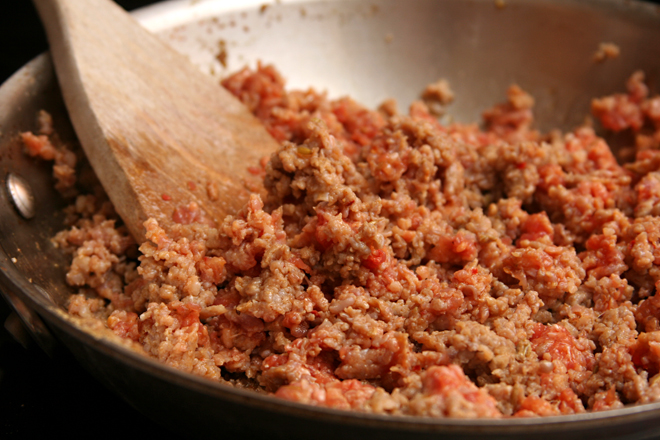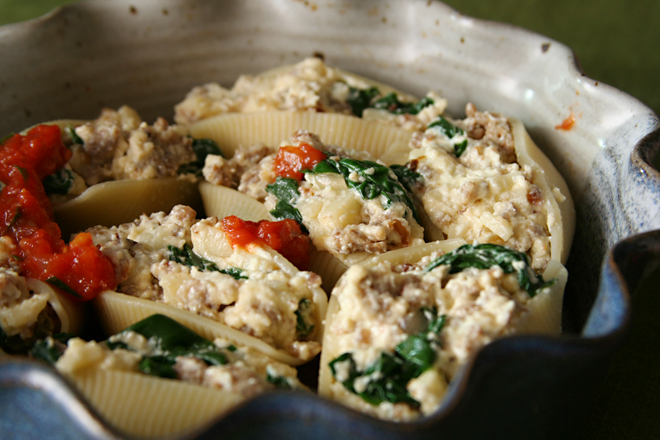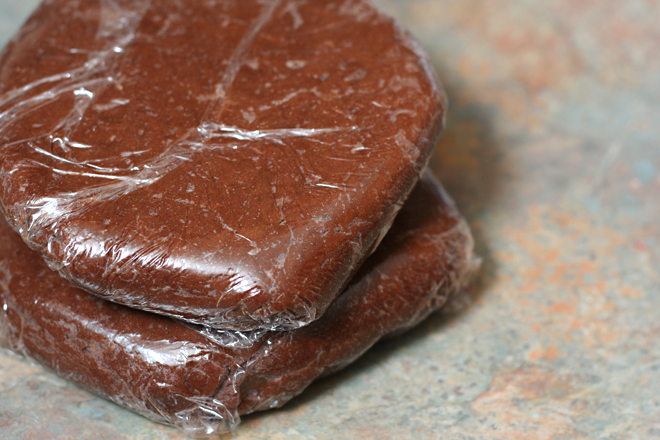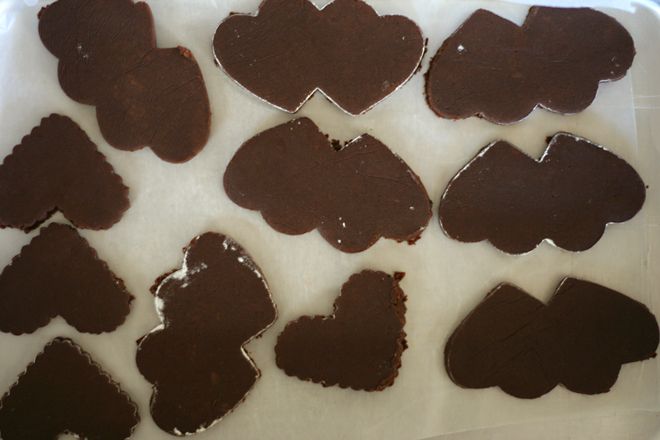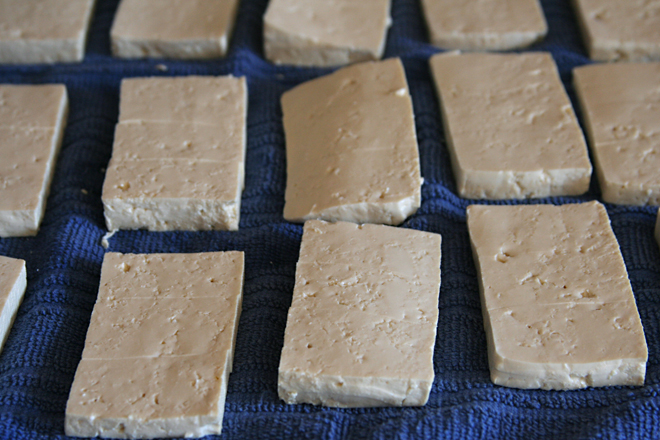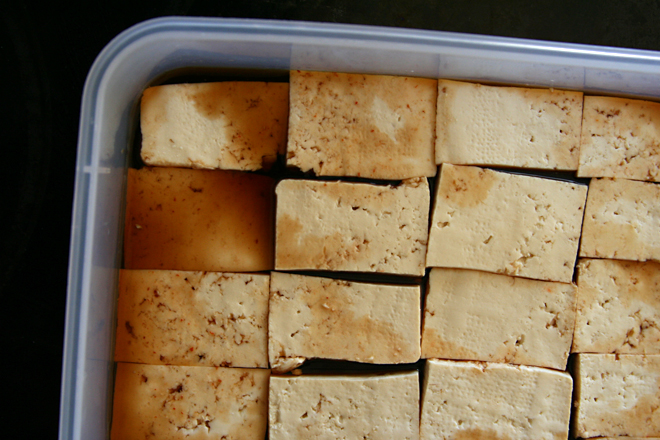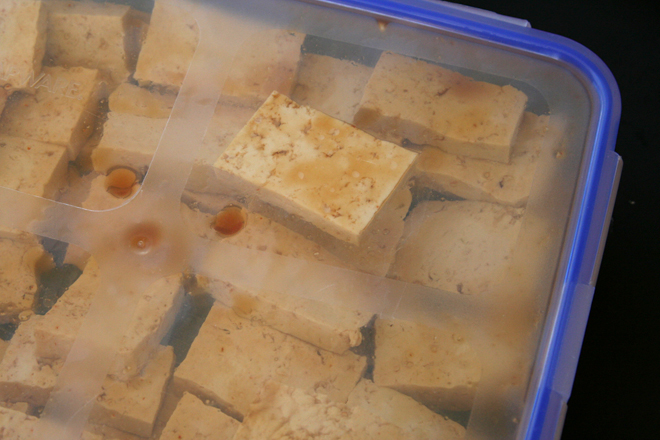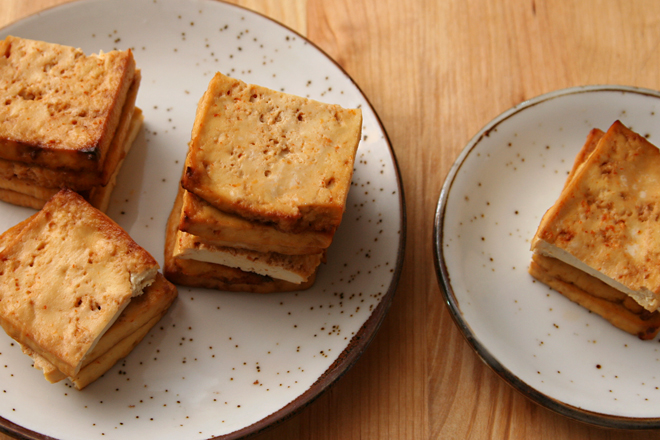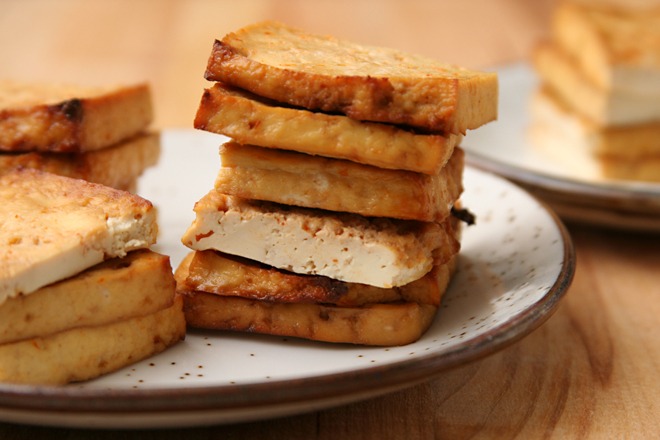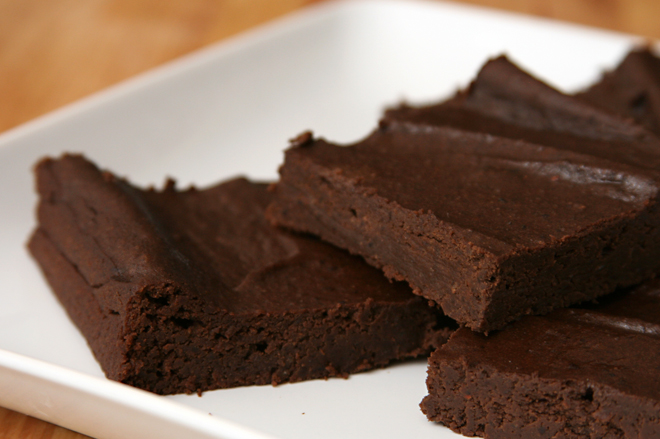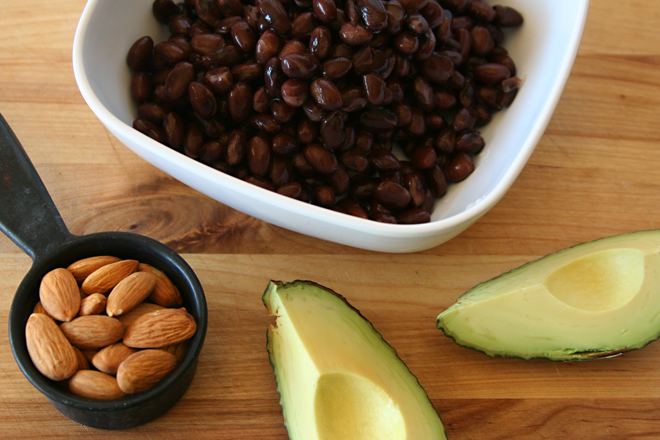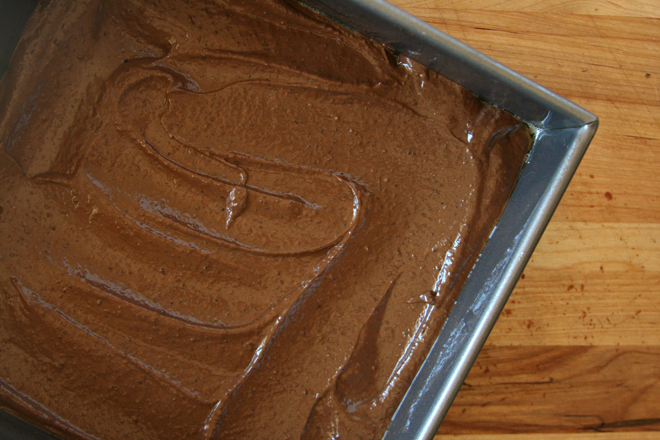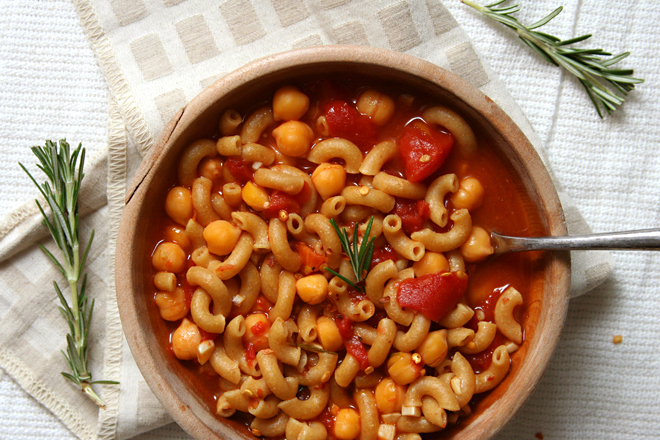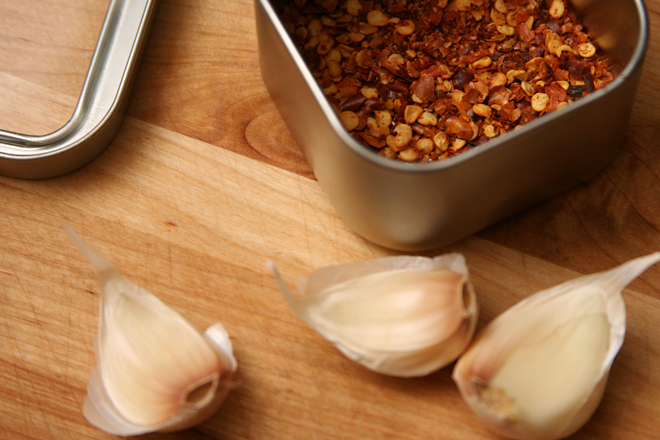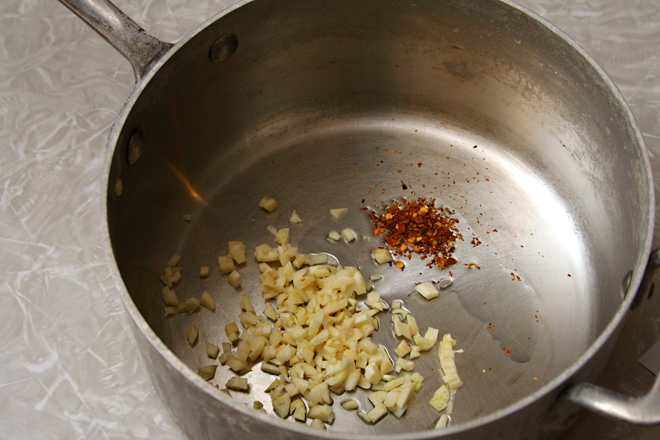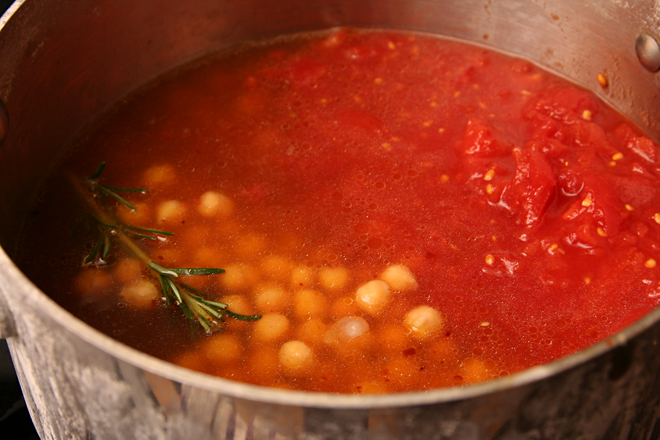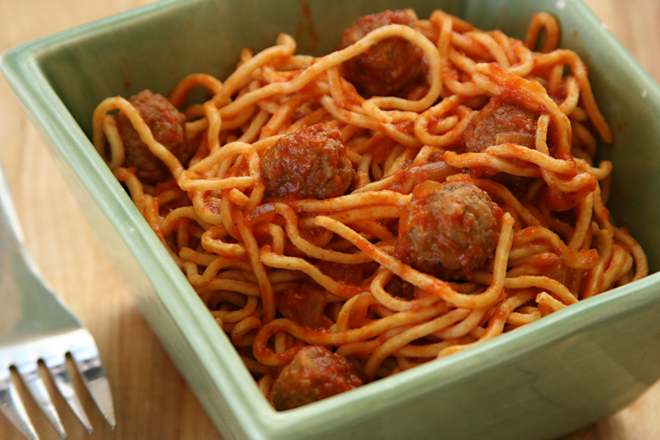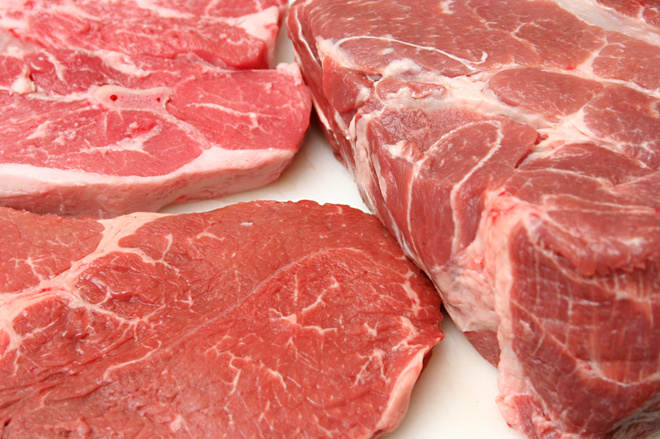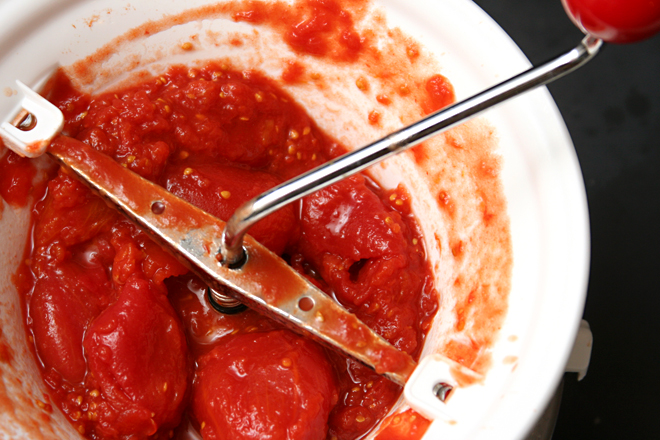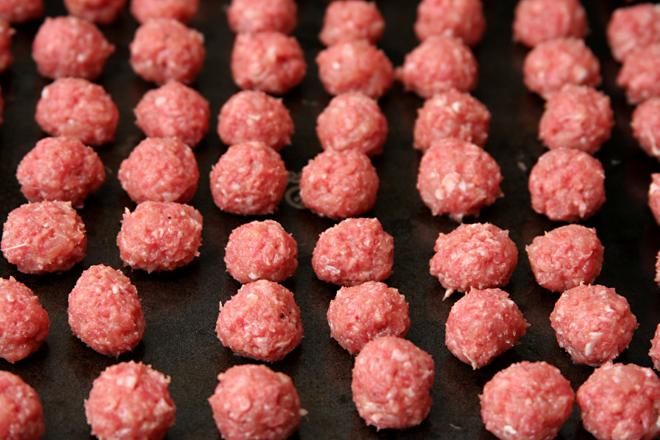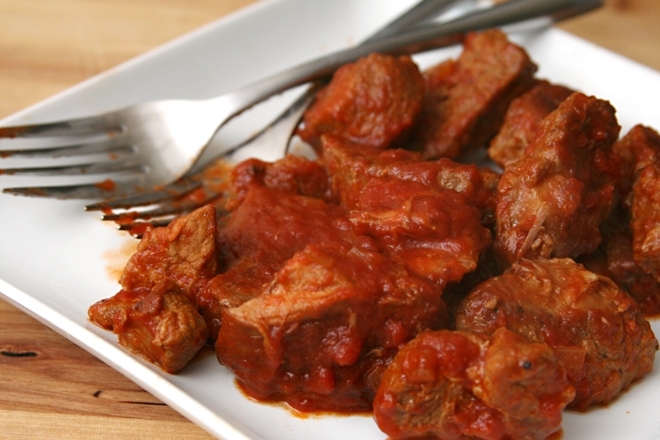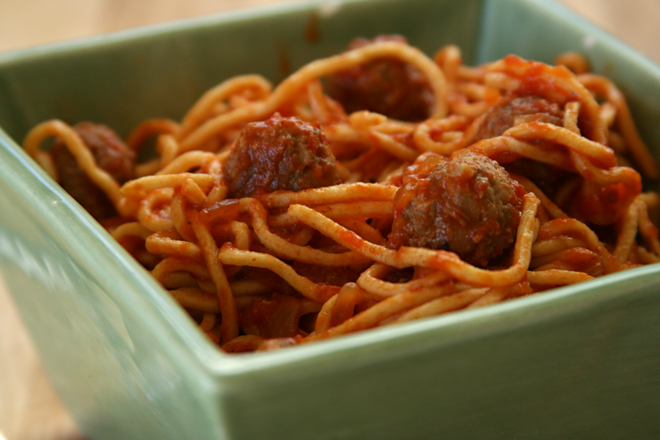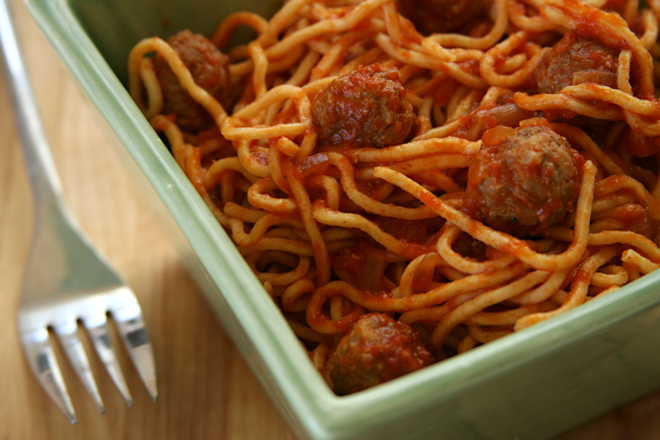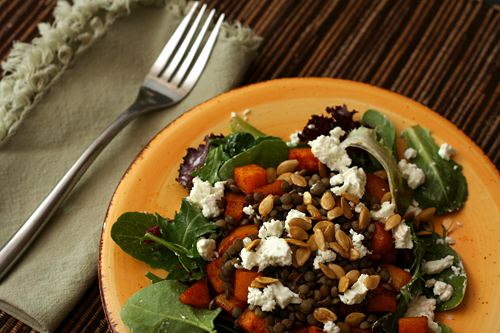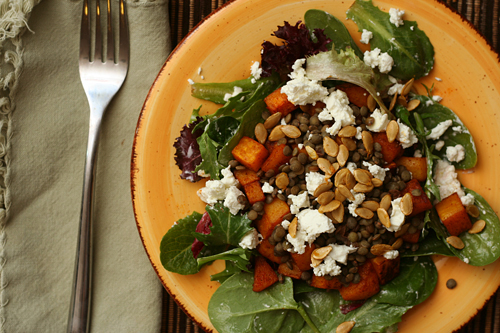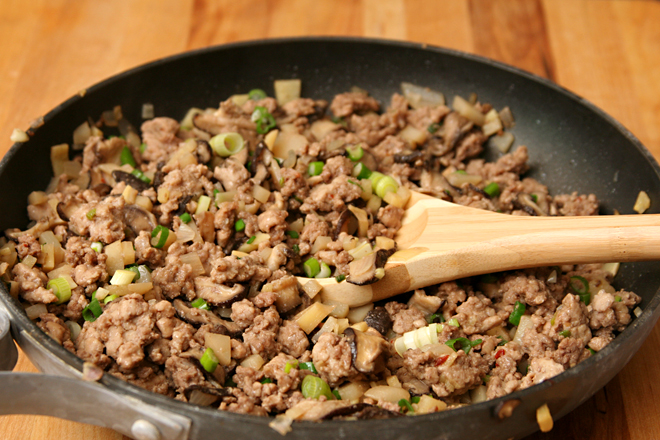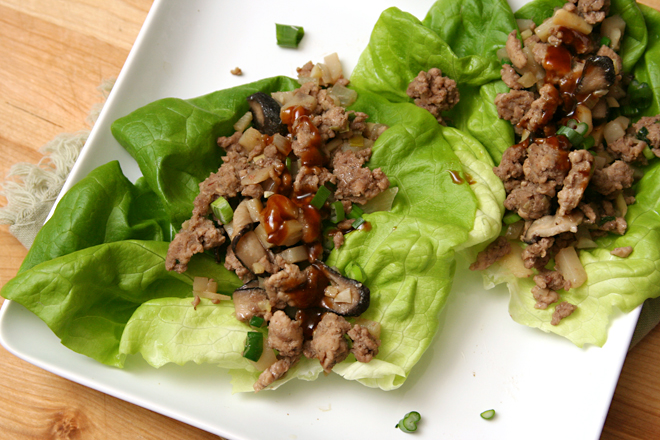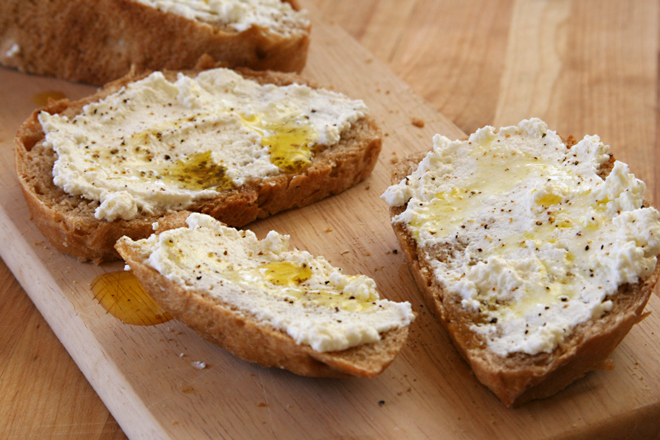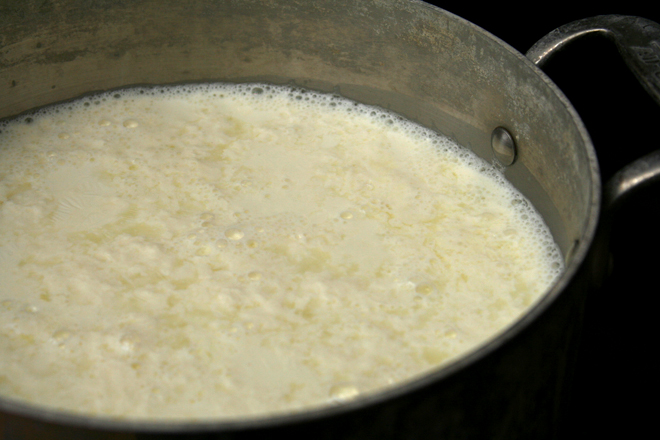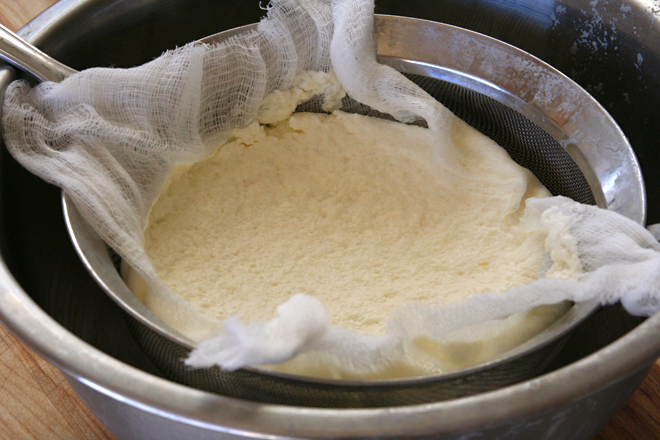When I was a kid and cooked dinner for my family once or twice a week, stuffed shells from a freezer bag topped with jarred spaghetti sauce was one of my staples. It took 5 minutes to arrange the shells in a baking dish and dump the sauce over them, and another five minutes to make a salad from iceberg lettuce and mealy out-of-season tomatoes. My mom hated when I made this meal, but not as much as she hated the prospect of cooking dinner for a family of five every day after work. Who can blame her – for wanting a break and for not enjoying my pre-teen culinary prowess?
These shells took longer to prepare than my standby meal as a kid, but at least by adding spinach to the filling and making my own (less-processed) tomato sauce, I figured I could skip the bland side salad. But I wasn’t just trying to add fiber to my meal, I wanted more flavor than the shells of my youth, which were stuffed with nothing but plain ricotta cheese.
First, Italian sausage contributes more than just savory meatiness, but a range of spices. Spinach would provide earthiness (plus I had a bunch to use up). The ricotta would be richer and smoother – and, okay, fine, you can use regular store-bought ricotta too, if you haven’t become spoiled by the homemade stuff like others of us. The tomato sauce on top would be fresher and sweetened just slightly with nothing but lightly caramelized onions.
This is a far cry from those pasta shells I made as a kid. For old time’s sake, though, I still ate them the same way I did back then, trimming off one corner of each shell for the first bite, then the next corner, then dividing the remaining square of pasta and filling into four equal bites. The biggest difference is that this filling is packed full of flavor – plus it took me almost an hour to make dinner instead of ten minutes.
One year ago: Bourbon Bread Pudding for Tuesdays with Dorie
Two years ago: Toasted Vegetable Subs
Three years ago: Floating Islands for Tuesdays with Dorie
Four years ago: Comparison of 4 Vanilla Frosting recipes
Printer Friendly Recipe
Sausage and Spinach Stuffed Shells
Serves 6
You probably won’t use the whole box of shells, but a lot of them might be broken or could rip after being boiled, so it’s nice to have some extra.
Feel free to use whatever your favorite tomato sauce is. I’ve provided the recipe I used below, which is a simple sauce I like for serving over rich pastas with a lot of their own flavors, like these shells.
1 (12-ounce) box jumbo pasta shells
salt
16 ounces Italian sausage
1 onion, diced
3 cloves garlic, minced
¼ teaspoon red pepper flakes
5 ounces spinach leaves, washed, coarsely chopped
1 (15-ounce) container ricotta (or 2 cups homemade ricotta)
8 ounces (2 cups) provolone, shredded
1 ounce (½ cup) parmesan, grated
2 eggs
Simple Tomato Sauce (recipe below, or 4 cups of your own sauce)
1. Adjust a rack to the middle position and heat the oven to 350 degrees.
2. Bring a large pot with at least 4 quarts of water to a boil. Add 1 tablespoon salt and the pasta shells; cook according to the package instructions. When the pasta is tender, use a large slotted spoon to transfer the shells to a dish towel.
3. Meanwhile, in a large skillet over medium-high heat, cook the sausage, breaking up large pieces, until it is no longer pink and has rendered some fat. Add the onion and ½ teaspoon salt; continue to cook, stirring occasionally, until the sausage is browned and the onion is softened. Add the garlic and red pepper flakes, stirring constantly for about 30 seconds, until fragrant. Remove the pan from the heat and stir in the spinach leaves, letting the residual heat wilt the leaves. Transfer the mixture to a large bowl; stir in the ricotta, provolone, parmesan, and eggs.
4. Lightly coat the bottom of a 9 by 13-inch baking dish with tomato sauce. Fill each shell with 3 to 4 tablespoons of filling. Transfer the filled shells to the baking dish. After all of the shells are filled, evenly distribute the remaining sauce over the shells. Cover the dish with aluminum foil.
5. Bake for 20 minutes; remove the foil and bake for about 10 minutes longer, until bubbling around the edges. Let rest 5 minutes before serving.
Simple Tomato Sauce
Makes about 4 cups
Chop the tomatoes right in the can using kitchen shears. You can use diced tomatoes instead, but they won’t break down as the sauce simmers.
2 teaspoons olive oil
½ small onion or 1 large shallot, diced fine
¼ teaspoon salt
2 cloves garlic, minced
¼ cup red or white wine
2 (28-ounce) cans whole tomatoes, undrained, chopped
1 tablespoon minced basil and/or parsley
In a large saucepan over medium heat, heat the oil until it flows like water when the pan is tilted. Add the onion and salt and cook, stirring occasionally, until the onion just starts to brown around the edges, about 8 minutes. Add the garlic and red pepper flakes and cook, stirring constantly, until fragrant, about 30 seconds. Add the wine, scraping up any browned residue on the bottom of the pan. Increase the heat to medium-high and add the tomatoes with their juice. Bring to a simmer, then reduce the heat to medium-low and simmer, stirring occasionally, about 15-20 minutes, until the sauce is thickened. Stir in the basil or parsley.

